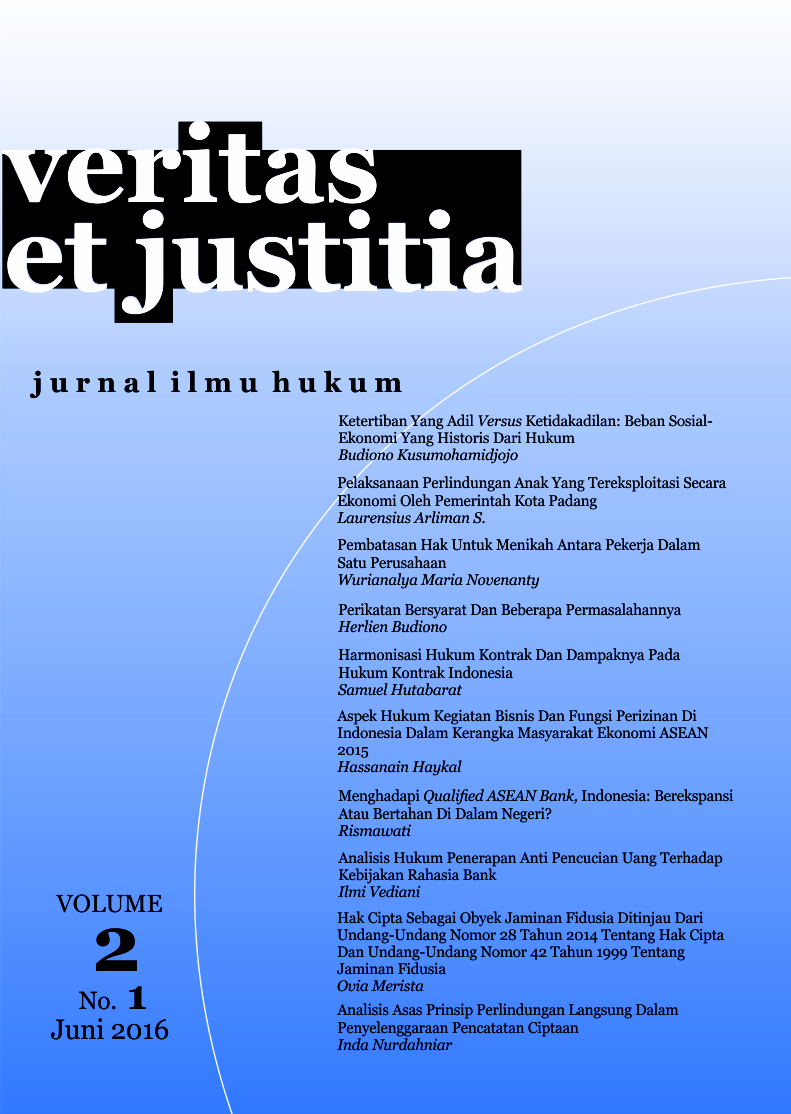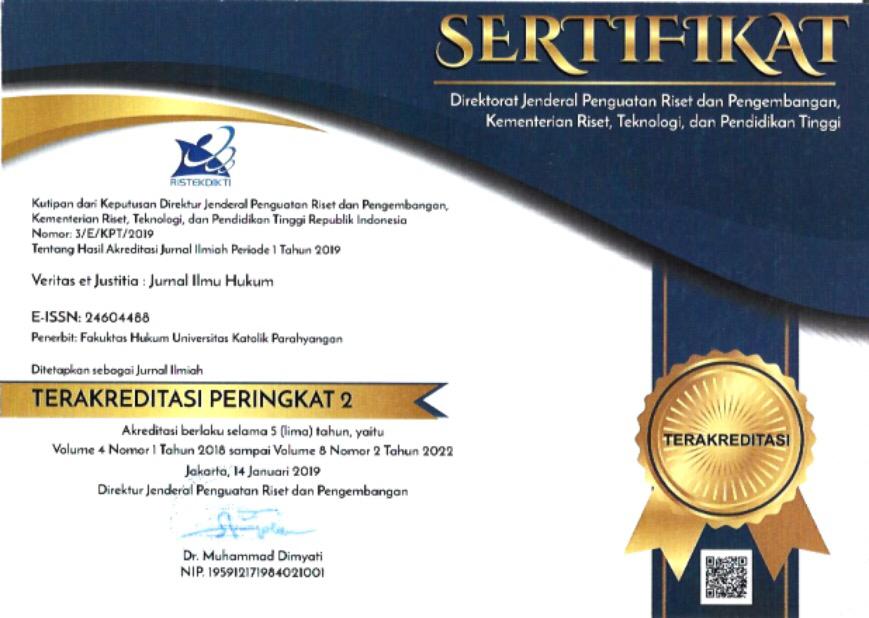KETERTIBAN YANG ADIL VERSUS KETIDAKADILAN: BEBAN SOSIAL-EKONOMI YANG HISTORIS DARI HUKUM
DOI:
https://doi.org/10.25123/vej.v2i1.2075Abstrak
This paper is based on a two decade observation on the dilemma of order and justice, leading to an attempt to analyze the social-economic factors underlying the historical roots of injustice. On its course it attempted to take lessons from historically proven axioms provided by certain heavy weight thinkers. While trying to make the best out of those axioms, the analysis could not ignore the hard facts of the daily life of the billions of people suffering from unending injustice in most parts of the world, in the rich and let alone in the poor parts of it. Neither could it escape from criticizing the ubiquitous mess in the justice system, almost universally. Although the overall problem of injustice does not seem to provide much hope for a better life of the people at large, the conclusion of this paper tried to distant away from a pessimistic stance and instead proposed an agenda for those who may concern to be carried out. This paper contains forethoughts of a book in the making regarding basically the same problem.
Keywords:
history, authority, rationality, law, order, equality, justice##submission.downloads##
Diterbitkan
Terbitan
Bagian
Lisensi
Authors who publish with this journal agree to the following terms:
Authors retain copyright and grant the journal right of first publication with the work simultaneously licensed under a Creative Commons Attribution License that allows others to share the work with an acknowledgement of the work's authorship and initial publication in this journal.
Authors are able to enter into separate, additional contractual arrangements for the non-exclusive distribution of the journal's published version of the work (e.g., post it to an institutional repository or publish it in a book), with an acknowledgement of its initial publication in this journal.
Authors are permitted and encouraged to post their work online (e.g., in institutional repositories or on their website) prior to and during the submission process, as it can lead to productive exchanges, as well as earlier and greater citation of published work.
The Journal allow the author(s) to hold the copyright and to retian publishing rights without restrictions.










